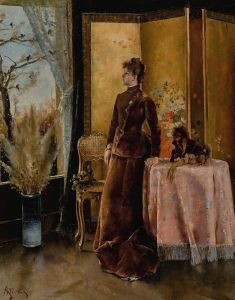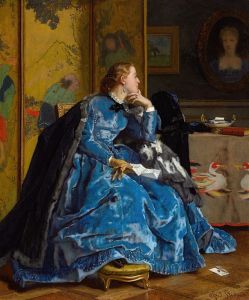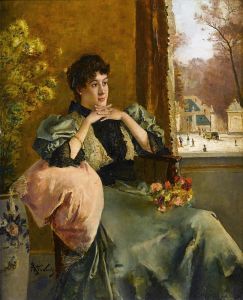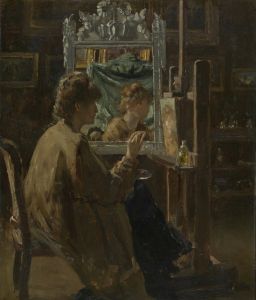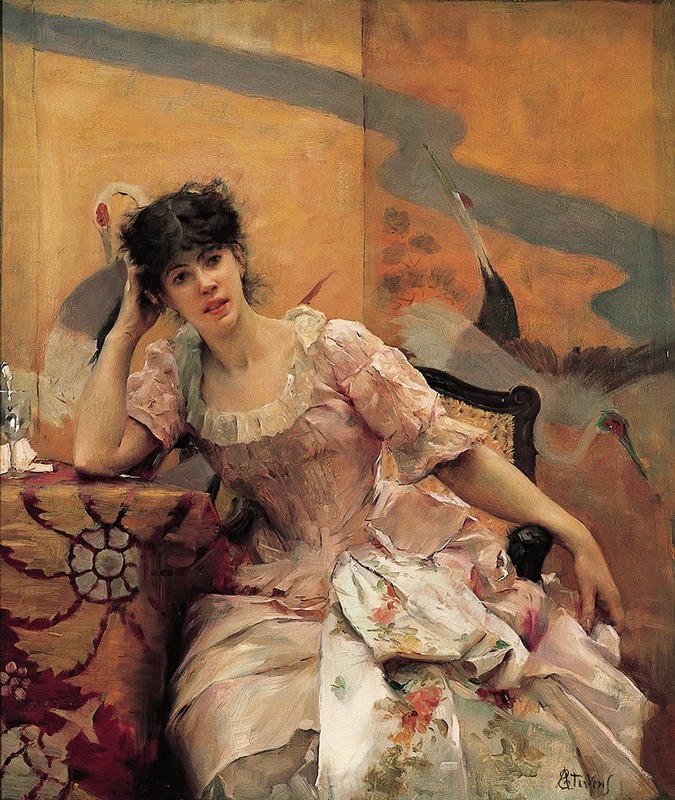
Young Woman with a Japanese Screen
A hand-painted replica of Alfred Stevens’s masterpiece Young Woman with a Japanese Screen, meticulously crafted by professional artists to capture the true essence of the original. Each piece is created with museum-quality canvas and rare mineral pigments, carefully painted by experienced artists with delicate brushstrokes and rich, layered colors to perfectly recreate the texture of the original artwork. Unlike machine-printed reproductions, this hand-painted version brings the painting to life, infused with the artist’s emotions and skill in every stroke. Whether for personal collection or home decoration, it instantly elevates the artistic atmosphere of any space.
"Young Woman with a Japanese Screen" is a painting by the Belgian artist Alfred Stevens, who was known for his exquisite portrayals of women and his ability to capture the nuances of contemporary life in the 19th century. Stevens was born in Brussels in 1823 and became one of the most celebrated artists of his time, particularly noted for his genre scenes and portraits that often depicted women in elegant interiors.
This particular painting, "Young Woman with a Japanese Screen," exemplifies Stevens' fascination with Japonisme, a trend that swept through Europe in the late 19th century, characterized by the influence of Japanese art and design on Western artists. The painting reflects the era's interest in exoticism and the incorporation of Eastern elements into Western art. Japonisme became a significant influence on many artists during this period, including Stevens, who integrated these elements into his work to enhance the aesthetic appeal and cultural depth.
In the painting, Stevens portrays a young woman in a refined interior setting, accompanied by a Japanese screen, which serves as a backdrop. The screen is intricately decorated, showcasing the detailed craftsmanship typical of Japanese art. This inclusion not only highlights the cross-cultural exchange prevalent during the time but also adds a layer of sophistication and elegance to the composition.
Stevens' technique is characterized by his meticulous attention to detail and his ability to render textures and fabrics with great precision. In "Young Woman with a Japanese Screen," the artist's skill is evident in the depiction of the woman's attire, the delicate folds of her dress, and the subtle play of light and shadow across the scene. The painting captures a moment of quiet introspection, with the young woman seemingly lost in thought, adding an element of narrative intrigue.
The use of color in the painting is also noteworthy. Stevens employs a harmonious palette that enhances the serene and contemplative mood of the scene. The interplay of soft hues and the careful modulation of tones contribute to the overall sense of balance and harmony, which are hallmarks of Stevens' work.
Alfred Stevens' paintings often reflect the social and cultural milieu of his time, and "Young Woman with a Japanese Screen" is no exception. It offers a glimpse into the domestic life of the bourgeoisie, highlighting the period's fascination with luxury, beauty, and the exotic. The painting is a testament to Stevens' ability to blend realism with a touch of romanticism, creating works that are both visually captivating and rich in narrative content.
Today, Stevens' work is appreciated for its technical excellence and its ability to capture the spirit of an era. "Young Woman with a Japanese Screen" remains an important piece within his oeuvre, exemplifying his mastery of portraiture and his engagement with the cultural currents of his time. The painting continues to be studied and admired for its artistic merit and its reflection of 19th-century European society's engagement with the art and culture of Japan.






